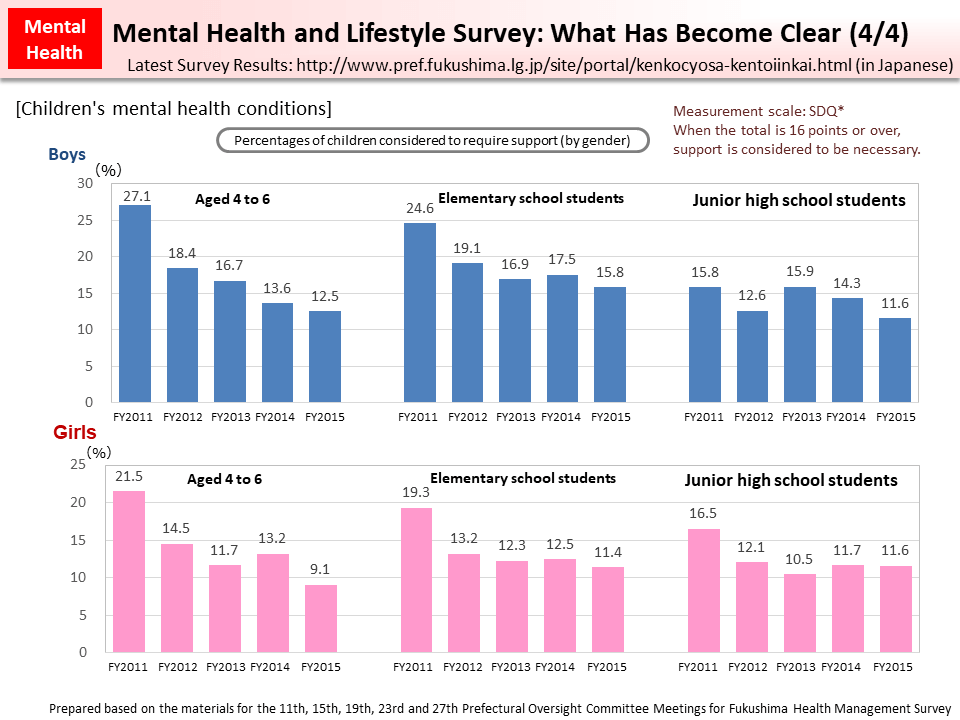Mental Health and Lifestyle Survey: What Has Become Clear (4/4)
- As an indicator to evaluate children's mental health conditions, SDQ* is utilized.
- In a prior study targeting the public in Japan who did not experience the nuclear disaster, people showing SDQ points over 16 accounted for 9.5% of the total. Compared with this, percentages of children showing SDQ points over 16 were higher for all groups except for girls aged 4 to 6 in the FY2015 survey, as was the case in the surveys in previous fiscal years.
- In the FY2015 survey, percentages of high SDQ points decreased for all groups compared with the results of the FY2011 survey. However, the improvement slowed down and the percentages remained almost unchanged from those of the FY2012 survey.
- Hours of sleep in the FY2015 survey were almost the same as those in the FY2012 survey and were approaching the level shown in the preceding study. Furthermore, the FY2015 survey shows a declining trend in percentages of children who seldom do exercise, but suggests poorer exercise habits compared with the results of a nationwide survey, although a direct comparison is difficult due to differences in survey content.
* SDQ (Strengths and Difficulties Questionnaire) = Scale to measure children's mental health conditions
Respondents reply to each question of a 25-item questionnaire concerning children's moods and behavior during the past six months (such as "Gives due consideration to other's feelings" or "Is restless and cannot stay still for a long time"). This survey covers those aged 4 to 15 to judge whether they need professional support or not.
- Included in this reference material on March 31, 2015
- Updated on December 1, 2017

